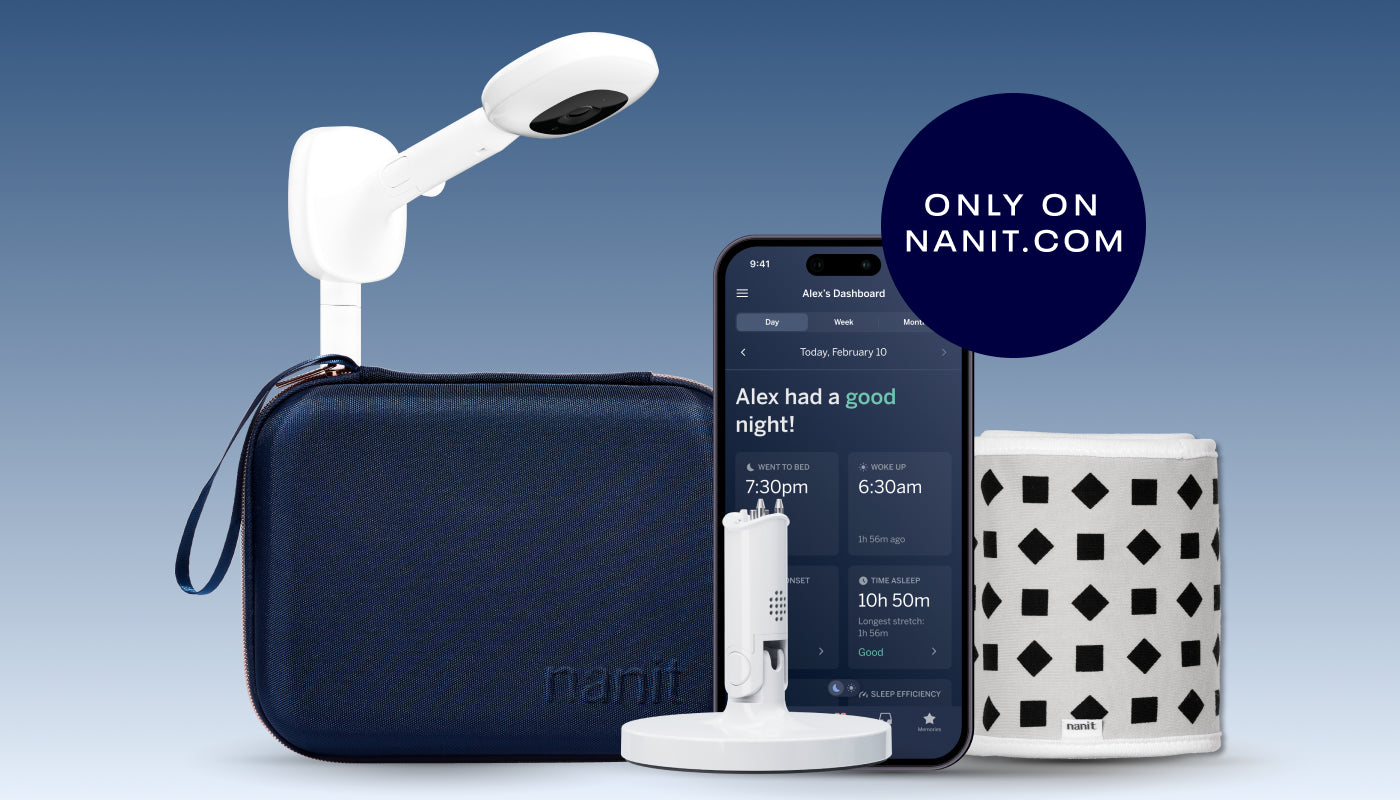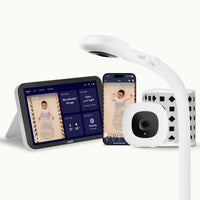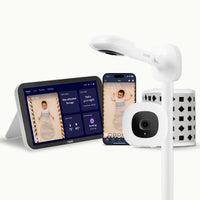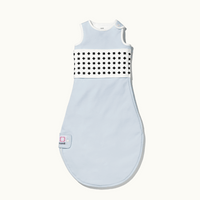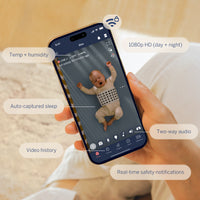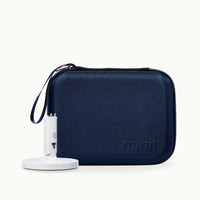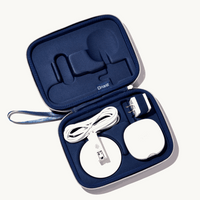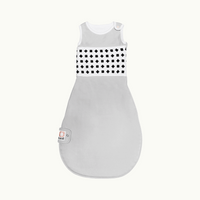If your baby sleeping for more than two hours at a time is as rare as $100,000 magically appearing in your bank account, you might wonder when to start sleep training But, experts recommend waiting until the baby is at least around four months before diving into the tricky but effective realms of sleep training and schedules.
Wondering why you need to wait? Here are a couple of factors impacting a baby’s sleep.
Developing Circadian Rhythms
For the first weeks of their life, newborn babies have trouble understanding if it’s night or day – this confusion is caused by the baby’s lack of a developed circadian rhythm. The circadian rhythm is a biological cycle that is like a 24-hour internal clock ticking in the background of the mind, with the clock telling the body when it’s time to be sleepy, and when it’s time to be alert.
When the circadian rhythm is fully developed, the brain sends a signal to the body to release melatonin (a hormone that makes the body tired) when it senses darkness, and when it perceives light, the mind tells the body to be alert.
The immaturity of a baby’s circadian rhythm is especially apparent in their first weeks of life, when they spread their sleep time pretty evenly throughout the day and night. As babies age, they progressively get better at clocking more shut-eye in the dark hours and consistent naps in the light hours, but you should expect a baby to keep wonky sleep hours for a few months.
So, just let nature take its course for the baby’s first three months and know that there’s little you can do to make your baby’s internal clock follow your preferred sleep schedule. For many babies, this “clock” isn’t fully functioning until the four-month mark.
If the circadian rhythm has little control over your baby’s sleep during this early time, what does? Getting (liquid) food.
Need for Frequent Feedings
Baby’s small stomach is also a cause of their short bouts of sleep. Breast milk and formula is quickly digested by newborns, causing many babies to call out for milky nourishment every two to three hours. Newborns need to be fed about 8-12 times every 24 hours, and the American Academy of Pediatrics recommends newborns be fed “whenever they show signs of hunger.”
But, by the three-month mark, baby’s stomach has grown, which allows them to have a “fuller tank” that will keep them satiated (and asleep!) for longer stretches – at this age, most babies need to be fed six to eight times a day. And around the baby’s four-month birthday, they can likely go 8 to 12 hours without needing a feeding at night.
So, between your baby’s three and four-month birthday, all systems should be primed to start sleep training.
Sleep Training at 3 Months: Techniques and Tips
Introducing independent sleep, aka sleep training techniques around 3 months may seem premature for some parents, but for some babies it can be an appropriate time to start building healthy sleep habits. While the full spectrum of sleep training methods might be more suitable for older infants, there are gentle, effective strategies you can adopt at this stage to lay the groundwork for better sleep patterns.
Sleep Training Methods Suitable for 3-Month-Olds
- “Camping out” Method: This technique involves sitting next to your baby's crib until they fall asleep, gradually increasing the distance each night to foster independent sleep without abrupt separation.
- Pick Up, Put Down Method: Designed to offer reassurance, this sleep training method allows you to soothe your baby by picking them up when they're unsettled, then gently placing them back down once calm, signaling it's time to sleep.
Tips for Successful Sleep Training
- Establish a Routine: Even at 3 months, a consistent pattern of feeding, play, and sleep, can help regulate your baby's schedule and promote better sleep habits.
- Navigating Night Wakings: While essential feedings continue through the night, understanding how to respond to your baby’s wakeful periods can influence their ability to self-soothe. Patience and consistency is key, as is giving your baby a chance to settle back to sleep on their own before intervening.
- Deciphering Sleep Patterns: Acknowledge that a 3-month-old is still developing their sleep routine. Progress in sleep training may ebb and flow, so patience and adaptability are key.
Remember, every little one is unique, and what works for one may not work for another. Stay flexible, patient, and responsive to your baby's cues, and you'll navigate this journey successfully.
What to Do: The Feed – Play – Sleep Routine
What are the three main things (besides lots of cuddles!) babies need? Well, according to experts, it’s food, play, and sleep – in that order. For newborns until 3-4 months, it’s completely fine for them to fall asleep while feeding. Once babies are older, it can be helpful to ease into a feed-play-sleep routine.
The logic behind the order of this routine is that babies generally have a spike in alertness and energy after eating, become sleepy after a stretch of play, and are hungry after getting some sleep.
To make sure the baby becomes energized instead of sleepy when they eat, offer the breast or bottle in a well-lit room where they won’t receive sleepy-time signals. When it’s time to transition from play to sleep, keep it short and sweet by reading a book or singing a lulling song. When baby wakes up, feed them as quickly as possible so they associate feedings with recharging their energy instead of drifting into dreams.
Determine the proper timing of this routine by keeping track of when your baby typically seems hungry, alert, and sleepy, and base your routine off on that timing. Because sleep deprivation can make the memory murky, you can set a timer to remind you when it’s time to start transitioning from one activity to another as you’re getting used to the routine – it will eventually become second nature.
Like most things in life, you may have to go through some trial and error before settling on timing that best suits you and your baby.
More Routine Equals a Calmer Baby and Parent
Not only does this routine help you help yourself, but because of how organically one activity flows into another, it will also likely serve to calm your baby because they’ll have more predictability in their day.
This routine will also make the hand-off of care easier for both the baby and their sitter. For example, if your mother-in-law will be watching your baby for an afternoon and she follows the Feed-Play-Sleep routine the baby is used to, all parties will be happier (and sleepier!)
Key Ingredients for The Sleep Zone
Becoming a pro at the Feed–Play–Sleep routine and transitioning baby to sleepy time when they’re primed for ZZZs is great, but if their sleep environment is not ideal, all your routine efforts might be pointless.
To help ensure your baby stays asleep for as long as their tiny body needs, mix the following goodies into your baby’s sleep zone:
- Darkness. Bust out the black-out curtains in your baby’s room, as darkness tells the brain to release melatonin, a hormone that’s critical for sleep. To help baby associate darkness with sleepiness, and brightness with playfulness, keep them in well-lit rooms when you’re in the feed and play portions of your daily routine.
- Cool Temperature. Stickiness and sweatiness: two things that are super distracting when you’re trying to sleep. Set your baby up for satisfying sleep by helping them stay cool.
The U.S. Department of Health and Human Services recommends a baby be dressed in light clothing for sleep and to keep the room at a temperature that is comfortable for an adult, which is generally a cooler temperature. In addition, a study published in the Archives of Pediatric & Adolescent Medicine reported that using a fan during sleep reduced the risk of SIDS (sudden infant death syndrome) by 72%.
- White Noise. The sounds of the rainforest, crash of waves, or patter of rain can all serve to mask sounds outside baby’s room that might wake them up. Luckily, you don’t need to live in the rainforest, on the beach, or in Seattle to lull your baby to sleep with these sounds: they can all be transmitted out of a light and sound machine. If you don’t have a sound machine, the consistent whir of a fan can also drown out sleep-disrupting noises.
- Safe Crib. A firm, uncluttered sleep space will minimize the factors that could lead to conditions like Sudden Infant Death Syndrome (SIDS). So, ensure your baby is sleeping in a new crib that does not have drop-sides and is on a firm mattress that snugly fits in the crib, and is covered in a fitted sheet. Position the crib away from windows and cords and do not place bumpers, blankets, pillows, or large stuffed animals in it.
Not only will these ingredients help your baby go to sleep, but will also offer cues that it’s still time for sleep if they wake up in the middle of the night.
The Struggle Is Normal
Have you had nights where it’s tricky to fall asleep? I’m guessing yes. Babies are no different and will likely have times when they struggle with going to bed. By remembering that this occasional struggle is normal and offering your baby opportunities to figure out ways to soothe themselves back to sleep (by not immediately intervening when they stir), you’re setting them up for long-term sleep success.
And, if the Feed–Play-Sleep routine and optimal sleep zone doesn’t immediately turn your baby into a sleep-trained-wonder, give it time. Like any routine – exercising, calling your mom every week, or eating 25 grams of fiber daily – there will be a period of adjustment before it clicks and you wonder how you ever got through life without it.
